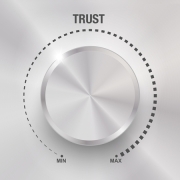Having a strong IT foundation is essential for companies of all sizes. This is especially true in Clinton, Massachusetts, where businesses are increasingly reliant on technology for efficiency, growth, and innovation. Building a future-proof IT strategy requires finding the right IT provider that can cater to your organization’s unique needs, including assessing the IT requirements, evaluating credentials, and promoting scalability and flexibility.
When considering an IT provider, businesses should also prioritize cybersecurity and customization options suitable for various sizes. Support and maintenance are helpful in promoting continuous operations through disaster recovery and business continuity planning.
Key Takeaways
- Finding a suitable IT provider in Clinton, Massachusetts requires assessing IT requirements, and evaluating credentials.
- Prioritize cybersecurity, customization options, support, and maintenance.
- Invest in innovative technologies to develop a reliable IT strategy
Assessing the IT Needs of Clinton Businesses
To help build a reliable IT strategy, Clinton businesses must first assess their IT needs. This process involves identifying the key components of their IT infrastructure and evaluating the effectiveness of their current systems. It is crucial for businesses of all sizes to undertake this step in order to develop a robust IT strategy.
The first step in assessing the IT needs is to identify the core components of the business’s IT infrastructure. This includes hardware (such as servers, workstations, and networking equipment), software (including operating systems, applications, and cloud services), and security measures (like firewalls and antivirus protection). Businesses should create an inventory of these components to help them have a clear understanding of their current IT environment.
Next is the performance evaluation of the existing IT systems. Companies can use benchmarking tools to compare their systems’ performance with industry standards and best practices. This will help identify any weaknesses or bottlenecks in the setup. Analyzing the data from these assessments will give businesses a clear view of their system’s shortcomings and areas for improvement.
Another crucial aspect is assessing the security measures in place. With the increasing threat of cyberattacks, the importance of a secure IT infrastructure cannot be ignored.
Clinton businesses should conduct regular security audits and/or hire external security consultants to help identify vulnerabilities and protect their valuable data from potential threats. Effective security measures should be prioritized to safeguard the company’s digital assets.
To help maintain the IT infrastructure and remain up-to-date, businesses should also monitor technological advancements and trends in their industry. This may guide them to make informed decisions about the tools and technologies that would enhance their IT strategy and help future-proof their operations.
Once the assessment phase is complete, businesses can use this information to create a comprehensive IT strategy that caters to their specific needs and objectives. By working with a reliable IT provider, Clinton businesses of all sizes can strive to have a reliable IT infrastructure in place.
Evaluating IT Service Provider Credentials
When looking for the right IT Provider for your Clinton business, assessing their credentials is a vital step in building an IT strategy.
IT Service Providers with relevant qualifications, experience, and a proven track record can help in optimizing technology management and potential growth for organizations of any size.
Consider the experience and reputation of IT Service Providers. Check their:
- Years in operation
- Client testimonials
- Case studies
- Industry awards
These factors can offer insights into the provider’s overall competence, professionalism, and ability to handle various IT challenges.
Another important aspect is vendor partnerships. A proven relationship with leading tech vendors like Microsoft, Cisco, and Kaseya helps your IT provider have access to the latest products, support, and training.
This collaboration may result in better services, cost savings, and increased efficiency for your business.
Finally, evaluate how a potential IT Service Provider approaches ongoing learning and staying current in a rapidly changing technology landscape. A trusted IT provider will engage in continuous learning, participate in industry events, and explore innovative solutions to help your business stay ahead of the curve.
In summary, evaluating IT Service Provider credentials involves examining experience, reputation, vendor partnerships, and commitment to staying current. Taking these factors into consideration will help Clinton businesses make an informed decision and build a robust, future-proof IT strategy.
The Importance of Scalability and Flexibility in IT Services
It is essential for Clinton businesses of all sizes to have a reliable IT strategy. A component of this strategy can be finding an IT provider that offers both scalability and flexibility in their services.
Scalability refers to the ability of an IT system to grow and expand to meet the increasing demands of a business. This is particularly important for small and medium-sized businesses (SMBs), as they often experience rapid growth and need their systems to keep up with this expansion.
Scalable IT services helps provide businesses with the capacity to easily increase their resources, such as storage, bandwidth, or processing power, minimizing disruption or cost.
Flexibility, on the other hand, refers to the ability of an IT system to adapt to changing business needs and requirements.
Flexible IT systems help businesses stay agile and responsive to market changes, making it easier to adjust their processes and technologies as needed. For instance, organizations are driving flexible and creative methods to efficiently manage strategic decisions.
When selecting an IT provider, it would be helpful for businesses to consider the following factors:
- Business growth: Does the provider have a track record of supporting businesses during periods of growth?
- Customizability: Can their services be tailored to fit the unique needs of your business?
- Integration: How easily can their services be integrated with your existing systems?
- Future readiness: Are their systems designed to be adaptable, with an eye toward emerging technologies and trends?
By confirming that their chosen IT provider can offer scalability and flexibility, Clinton businesses of all sizes can build a strong foundation for future success in the ever-changing business landscape.
CyberSecurity Considerations for IT Strategies
When building an IT strategy for Clinton businesses of all sizes, it is essential to prioritize cybersecurity. This involves taking several key factors into account while choosing an IT provider.
First and foremost, businesses should understand the current threat landscape and the types of cyberattacks they may face.
This includes phishing attacks, ransomware, and data breaches. By recognizing these risks, companies can better assess the security measures offered by potential IT providers.
Next, having a layered security approach is crucial. This means implementing multiple security measures, such as firewalls, endpoint protection, and regular software updates. Additionally, businesses should consider utilizing encryption for sensitive data and implementing strong authentication methods for network access.
Another significant consideration is the security policies and practices of the IT provider. It’s essential to evaluate how the provider handles incident response, data backup, and disaster recovery. This will help businesses determine if the IT provider can effectively protect their data and promptly address any security incidents.
As cybersecurity threats continue to evolve, it’s necessary for businesses to regularly review and update their IT strategy. This involves staying informed about new threats and incorporating new security measures as needed. In this process, businesses should also regularly assess the performance of their IT provider and discuss potential improvements.
Ultimately, a strong cybersecurity foundation is a critical component of a future-proof IT strategy for businesses of all sizes. By proactively addressing potential threats, implementing a layered security approach, and continuously updating their strategy, Clinton businesses can depend on their IT provider to maintain your security against cyber threats.
Customization Options for Various Business Sizes
When building an IT strategy, it is essential to consider the varying needs of businesses based on their size.
Customization of IT solutions promotes a tailored approach that caters to the unique requirements of each organization.
Small Businesses
Smaller businesses typically require cost-effective and scalable solutions that can efficiently support their growth.
Some key IT customization options for these organizations include:
Cloud-based services: Small businesses can benefit from cloud solutions that offer flexibility, reduced infrastructure costs, and seamless scalability.
Data Backup and Recovery: Smaller businesses should prioritize data backup and recovery solutions tailored to their budget and requirements, promoting business continuity in case of unforeseen circumstances.
Medium-sized Businesses
Medium-sized businesses often have higher IT demands and require more advanced solutions.
Customization options for these organizations include:
- Integrated IT systems: Medium-sized businesses are likely to benefit from integrated IT systems that combine data analytics, customer relationship management (CRM), and enterprise resource planning (ERP). These systems can be customized to streamline processes and improve efficiency.
- Security: As a medium-sized business grows, so does the complexity and size of its IT infrastructure. Companies in this category should invest in customized security solutions to protect valuable data and foster compliance with industry-specific regulations.
Large Businesses
Large businesses have complex IT needs and require highly customizable and robust solutions. Options for such organizations include:
- Dedicated IT Infrastructure: For large organizations, investing in a dedicated IT infrastructure allows for greater control over data, security, and system performance.
- Custom Software Development: Large businesses may often require bespoke software solutions to address unique challenges, streamline processes, and enhance productivity. Custom software development helps that the organization’s specific requirements are met and that legacy systems can be integrated or updated as needed.
In conclusion, businesses of all sizes should consider customization options when selecting IT solutions to help that their IT strategy addresses the unique challenges and requirements of their organization.
Support and Maintenance: Sustaining Continuous Operations
Selecting the right IT service provider for your Clinton business requires a strong focus on support and maintenance. It’s essential for your ongoing operations that IT systems remain functional, updated, and secure. To maintain continuous operations, there are key considerations that must be taken into account, such as proactive monitoring, periodic updates, customized support, and future growth potential.
One component of IT support and maintenance is proactive monitoring. To prevent potential issues from escalating, an IT provider can constantly monitor your systems. This allows them to detect and address issues before they adversely affect your operations. For example, managed security services play a vital role in safeguarding your business from emerging cyber threats.
Another aspect of IT support is regular system updates and maintenance. With the growing reliance on digital systems, businesses must keep their software and hardware up-to-date to stay competitive. An effective IT provider will help your systems to undergo periodic updates, improving performance, and addressing security vulnerabilities while minimizing downtime.
One size does not fit all when it comes to support needs. An IT provider may offer customized support options based on the specific demands of your Clinton business. Different organizations require varying levels of support, and a flexible approach allows your IT partner to tailor their services to best suit your business size and needs.
Finally, consider how your business may expand and evolve, and choose an IT provider that can grow with you. As the circular economy business models in technology become more prevalent, it’s crucial to have an IT partner who can adapt their support services to match your future requirements.
In summary, an IT strategy for Clinton businesses of all sizes relies on IT support and maintenance that covers proactive monitoring, periodic system updates, customized support services, and the potential for growth. By focusing on these aspects, you can more easily maintain continuous operations and safeguard your business against potential challenges and changes.
Disaster Recovery and Business Continuity Planning
Disaster recovery (DR) and business continuity planning (BCP) are essential components in designing a future-proof IT strategy for businesses in Clinton, particularly small and medium-sized businesses (SMBs) . When selecting the right IT provider, organizations should assess their expertise in these areas.
Firstly, it’s important to understand the difference between DR and BCP. Disaster recovery focuses on the restoration of IT systems and data following a disaster, while business continuity planning aims to help an organization continue operating during and after a disruption. They are complementary aspects of a comprehensive organizational resilience strategy.
A competent IT provider should excel in designing, implementing, and testing DR plans. The plan should include clear objectives, recovery point objectives (RPOs), and recovery time objectives (RTOs). Regular backups and testing are essential to maintain data integrity and validate procedures.
IT providers may be well-versed in developing and executing BCP strategies. Such strategies include identification of critical operations, developing communication and emergency response plans, and conducting staff training. Furthermore, the right IT provider must have experience working with different types of businesses to create customized solutions.
To strive for sufficient compatibility, a chosen IT provider must demonstrate their ability to integrate the DR and BCP plans into the organization’s overall IT strategy. Key considerations include:
- Scalability: Businesses should be able to grow with their IT provider and adapt to new technologies.
- Compliance: Necessary regulatory requirements must be adhered to, such as GDPR or HIPAA standards.
- Security: Strong encryption, secure access management, and timely security updates should be provided by the IT provider.
- Managed Services: Outsourcing essential services like system maintenance, troubleshooting, and continuous monitoring can save time and resources.
In conclusion, an IT strategy for Clinton businesses of all sizes relies on a comprehensive disaster recovery and business continuity plan. Choosing the right IT provider can go a long way in striving for organizational resilience and maintaining the company’s operations in the face of unexpected disasters and disruptions.
Investing in Innovative Technologies
Investing in innovative technologies is crucial for businesses of all sizes in Clinton to build a future-proof IT strategy. By doing so, companies can stay ahead of the competition, adapt to changing market needs, and improve operational efficiency. Let’s explore some key factors to consider when choosing the right IT provider.
1. Cloud Computing: Cloud computing enables businesses to access and manage their data and applications through the internet, without the need for on-premise hardware and software. This can lead to significant cost savings and increased flexibility. Look for an IT provider that can offer reliable cloud services and a track record of expert implementations.
2. Cybersecurity: Securing your business data and systems is an essential aspect of any IT strategy. Work with an IT provider that offers leading-edge cybersecurity solutions and risk management strategies to help you protect your valuable digital assets.
3. Big Data Analytics: Harnessing the power of big data analytics can provide businesses with valuable insights and help drive evidence-based decision-making. A future-proof IT provider should offer solutions for big data analytics along with expertise in implementing these tools effectively.
4. Scalability: Choose an IT provider that can offer scalable solutions to accommodate the growth of your business. This includes infrastructure, software, and support services that can seamlessly expand as your requirements evolve.
Remember, investing in these innovative technologies is a helpful component of building an IT strategy. By selecting an IT provider with expertise in these areas, Clinton businesses can adapt and thrive in a rapidly changing digital landscape.
Developing Long-Term IT Strategies
When building an IT strategy, it’s essential to find the right IT provider for businesses of all sizes in Clinton.
A long-term IT strategy helps that your organization’s technological needs are met and aids you to stay ahead of the competition.
Here are a few key elements to consider in developing a future-proof IT strategy:
- Identify current and future needs: Understand your organization’s present technology requirements and anticipate the potential needs in the coming years. Analyze trends in your industry and take into account the changing business landscape to better predict the future.
- Choose the right provider: Finding a suitable IT provider is crucial in supporting the success of your long-term strategy. Look for a provider with a proven track record of delivering solutions in your industry, scalability in terms of size, and experience in implementing various technological tools and systems.
- Promote adaptability and flexibility: An IT strategy should be flexible and adaptable to changes in technology, industry practices, and your organization’s growth. Partnering with an IT provider that offers adaptive and synergistic solutions that helps promote the continual evolution of your IT infrastructure to meet the changing needs of your business.
- Invest in employee training and development: The success of an IT strategy relies heavily on your team’s ability to effectively employ the provided tools and systems. Invest in employee training and development to help them better understand and adopt new technologies while preparing them to tackle future challenges.
- Implement robust security measures: Providing a secure IT infrastructure is a top priority for businesses of all sizes, and finding the right provider will strive to help you have a well-protected IT environment. Work with your provider to devise strong security protocols and adhere to the latest industry standards in data protection and privacy.
By focusing on these elements, you will create a future-proof and long-lasting IT strategy that supports the growth and success of your business in Clinton. Keep in mind that the right IT provider plays an essential role in implementing a successful long-term strategy, so don’t hesitate to carefully evaluate potential partners before making a decision.
Implementing the IT Strategy
When building a future-proof IT strategy, it is crucial to find the right IT provider for businesses of all sizes in Clinton. A well-designed and implemented strategy can guide companies towards successful digital transformation, enhancing efficiency and boosting competitive advantage.
Start by defining the goals and objectives of your IT strategy. Consider factors like reducing costs, increasing productivity, and improving customer satisfaction. Once you have a clear vision, evaluate potential IT providers based on their expertise, experience, and adaptability.
When researching IT providers, consider the following aspects:
- Services: Assess the range of services offered by each provider. Look for comprehensive solutions, including infrastructure management, application development, and cloud services.
- Industry experience: Choose a provider with experience in your specific industry. This helps them understand the unique challenges your business faces and can offer tailored solutions.
- Size compatibility: The provider should be able to cater to your business size, whether you are a small start-up or a large enterprise. This guarantees scalability and growth potential.
Companies should conduct a thorough technology and service audit to determine their current IT capabilities and identify potential shortcomings.
This enables businesses to align their IT strategy with overall objectives and leverage technology trends.
To implement the IT strategy successfully, follow these steps:
- Develop a plan: Outline the steps needed to execute the strategy, including timelines, resources, and budgets. Include a contingency plan for addressing any unforeseen challenges.
- Choose the right IT provider: Based on your research, select an IT provider that meets your objectives, offers relevant experience, and aligns with your company’s size and needs.
- Communicate: Confirm all stakeholders are informed about the new strategy, including employees, partners, and customers. Clear communication is essential for seamless adoption and successful implementation.
- Monitor progress: Regularly review the implementation process, measuring key performance indicators (KPIs) to determine if the strategy is on track to achieve its objectives.
In conclusion, implementing an IT strategy requires thorough planning, research, and communication. By finding the right IT provider for businesses of all sizes, companies in Clinton can embrace digital transformation and remain competitive in an ever-changing technological landscape.
Monitoring and Reviewing IT Service Performance
An essential part of building a future-proof IT strategy for businesses of all sizes involves monitoring and reviewing IT service performance. Establishing a systematic approach to assess the effectiveness of IT services enables companies to make informed decisions that will help maintain their IT systems stay up-to-date, secure, and efficient.
The first step in monitoring IT service performance is to identify key performance indicators (KPIs). These KPIs should be relevant, measurable, and aligned with the business’s goals. Examples of KPIs for IT service management can include system uptime, response time, ticket resolution times, and customer satisfaction ratings.
Once KPIs are defined, businesses should then implement monitoring tools to collect data on these performance indicators. Various technologies, including data-driven analytics, can be used to automatically gather information from IT systems, analyze the data, and provide actionable insights.
In addition to automated monitoring, it’s crucial to conduct regular reviews of IT service performance.
Periodic evaluations can help identify areas where improvements are needed and address any shortcomings.
Companies should also perform root cause analyses to determine the primary causes of issues and develop effective solutions to prevent future occurrences.
Lastly, businesses should incorporate continuous improvement into their IT strategy.
Regularly updating and refining IT processes in response to performance data maintains that the IT services remain future-proof and adaptable to changing business needs.
Making data-driven decisions and embracing an agile approach will contribute to maintaining optimal IT service performance.
Monitoring and reviewing IT service performance is a critical aspect of building a future-proof IT strategy for businesses of all sizes. By identifying KPIs, implementing monitoring tools, conducting regular reviews, benchmarking, and embracing continuous improvement, companies can strive to have a robust and efficient IT system in place.
Future Trends in Managed IT Services for Business Preparedness
As businesses of all sizes in Clinton push forward into the digital age, it’s important to stay up-to-date with the ever-evolving landscape of managed IT services. Embracing new trends in the IT sector will help businesses to adapt and remain competitive.
One key trend in managed IT services is their move towards cloud computing. More businesses are investing in cloud-based solutions to improve collaboration, increase scalability, and reduce costs. Managed IT & Cloud Services Providers can help businesses of all sizes optimize their IT resources and stay current with the latest technological advancements.
Another significant trend is the increased focus on cybersecurity. As cyber threats continue to evolve and become more sophisticated, businesses must prioritize their security posture. IT services providers are now offering advanced security solutions that include threat detection, prevention, and response to protect businesses from cyberattacks.
Integration of artificial intelligence (AI) and machine learning into IT services is another important trend to watch. These technologies are revolutionizing how businesses analyze data and make data-driven decisions. By incorporating AI-powered analytics, businesses can uncover new insights, automate processes, and optimize their operations.
In addition, the rise of remote workforces has resulted in a growing demand for mobile device management and BYOD (bring your own device) policies. Businesses must now adapt their IT strategies to support employees working from various locations, and managed IT services are proving instrumental in this regard.
Lastly, the growing importance of sustainability and energy efficiency in the IT industry means businesses will need to consider the environmental implications of their technological choices. Managed IT services providers can help businesses optimize their hardware and software to reduce energy consumption and minimize their carbon footprint.
In conclusion, staying abreast of these trends in managed IT services and partnering with a reliable provider will help businesses in Clinton be well-prepared for the challenges of the digital age, maintaining a strong IT infrastructure capable of supporting their evolving needs.
Frequently Asked Questions
How can businesses effectively evaluate potential IT providers?
Businesses should start by identifying their specific needs and goals. Then, they can research potential IT providers, focusing on factors such as experience, track record, references, and certifications. It’s essential to consider the provider’s compatibility with the company’s size, industry, and culture. Conducting interviews and comparing service offerings will help make an informed decision.
What are the key elements to consider when establishing an IT strategy for long-term resilience?
To create a long-term IT strategy, companies must understand their business objectives, assess current IT capabilities, and identify emerging technologies relevant to their industry. Additionally, implementing flexible and scalable systems is crucial for adapting to market changes. Planning for security, data management, and employee training will also contribute to a comprehensive and resilient IT strategy.
Which technologies should companies invest in to ensure they stay ahead in their industry?
Investing in the right technologies will vary depending on the specific industry and business goals. However, some common areas to consider include cloud computing, artificial intelligence, data analytics, and cybersecurity. Companies should keep an eye on emerging trends and disruptions within their sector and collaborate with IT providers to adopt suitable solutions.
What are the best practices for integrating new IT solutions into existing business processes?
Successful integration of IT solutions requires a clear implementation plan, which should involve thorough assessment of existing processes, employee training, and regular communication with stakeholders. Additionally, businesses should develop metrics to track performance and make adjustments as needed. It is crucial to manage risks and consider potential impacts on the business during the integration process.
How do business size and type impact the approach to selecting IT services?
Different business sizes and types require tailor-made IT services to meet their unique needs. Micro-sized companies might have different priorities compared to large enterprises. The scalability of the IT provider’s services, industry expertise, and adaptable pricing structures should be considered when selecting the right IT services for a specific business size and type.
Why is an adaptable IT infrastructure critical for business continuity in the evolving market?
In a constantly changing market, an adaptable IT infrastructure allows companies to respond quickly to new opportunities, challenges, and trends. This approach can increase operational efficiency, foster innovation, and improve competitiveness. Furthermore, having a future-proof IT strategy maintains business resilience in the face of unforeseen events or disruptions.
















